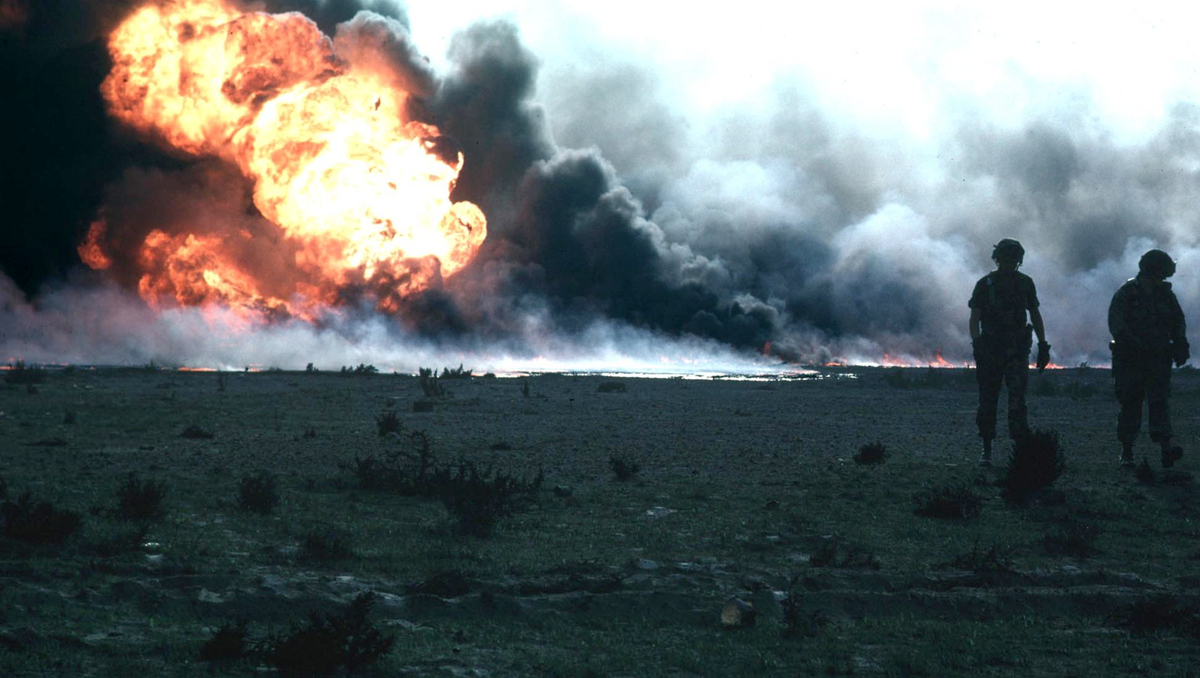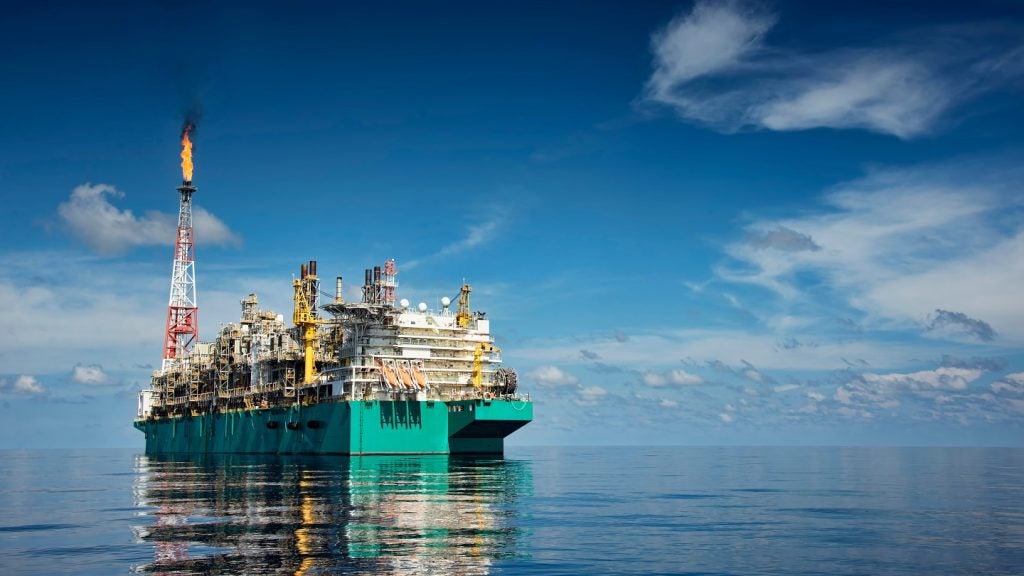
1910s – World War I
At the beginning of World War I, there was a glut of petroleum as its only real use was as kerosene, demand for which had been depleted by the invention of the lightbulb in 1878. As technology progressed over the course of the bloody years of conflict, however, it became a vital resource, providing flexible power to trucks and tanks.
“World War I was a war that was fought between men and machines,” said historian Daniel Yergin in his book The Prize: The Epic Quest for Oil, Money & Power, “And these machines were powered by oil.”
This period marks possibly the first great moment of change in the oil industry, expanding its importance vastly as the Age of Oil picked up pace.
1956 – The Suez Crisis
On 26 July 1956, the President of Egypt, Gamal Abdel Nasser, nationalised the Suez Canal, ostensibly to use the tolls to fund the Aswan Dam. It is commonly thought to have been an act of revenge against the British and French who had previously held control of the company that ran the canal.
The Suez Canal was an extremely important transit route for oil, with 1.5 million barrels of oil being transported through it a day. Of these, as much as 1.2 million barrels were destined for Western Europe. At the time, Egypt made around $17m from the canal a year, while the British and French company made $31m.
Nationalisation of the canal quickly became bloody, with British and French soldiers descending on the area, and the conflict escalated as America and Israel gave support to the opposing sides. The unrest resulted in a massive shortage of oil, with Britain possessing only six weeks of reserves at the time of the announcement. The shortage led to France borrowing $260m from the World Bank to pay for oil, and Britain lending more than a billion dollars for oil and to stabilise the pound.
How well do you really know your competitors?
Access the most comprehensive Company Profiles on the market, powered by GlobalData. Save hours of research. Gain competitive edge.

Thank you!
Your download email will arrive shortly
Not ready to buy yet? Download a free sample
We are confident about the unique quality of our Company Profiles. However, we want you to make the most beneficial decision for your business, so we offer a free sample that you can download by submitting the below form
By GlobalData1960 – OPEC creation
The Organization of the Petroleum Exporting Countries (OPEC) was created at the Baghdad Conference from 10 to 14 September 1960. Initially formed of Iran, Iraq, Kuwait, Saudi Arabia and Venezuela, there are now 15 member states.
This intergovernmental organisation was established to help co-ordinate and unify petroleum products, in order to effectively and efficiently manage the price of oil. This followed the second consecutive cut in the oil price, brought about by increased production by the Soviet Union. Its beginning was rocky, as to secure the price of oil meant member countries had to reduce output, leading to an initial reduction in profit. This caused infighting at the 1962 meeting, as OPEC struggled to decide on an export limit.
OPEC officially gained the power to control the price of oil in March 1971, when it shifted from the US as the Texas oil producers had no limit to the oil they could produce. The organisation has acted on a number of occasions to stabilise the oil industry, most recently curbing production in January 2017.
1973 – The Yom Kippur War
The Yom Kippur War, also known as the October War, began on 6 October 1973, when Israel was attacked simultaneously by Egypt and Syria. The war escalated as the Soviet Union began supplying Egypt and Syria with weapons, and the US aided Israel.
Arab members of OPEC embargoed oil exports to many countries, including the US, Japan and Western Europe, while quadrupling the price of exports to others. This was an act of retaliation for the West’s support of Israel throughout the Yom Kippur War. It helped to precipitate a recession in the US, in particular, and although the embargo was lifted in 1974, oil prices stayed high throughout the decade.
1979 – The Iranian Revolution
A popular uprising in 1979 in Iran led to the monarchy being overthrown and the establishment of the Islamic Republic. The social upheaval of the Iranian Revolution led to a global oil crisis, as the country’s output was severely reduced.
Before the revolution, Iran was the fourth-biggest oil producer in the world, accounting for 6.05 million barrels a day of production. This was as much as a fifth of all OPEC production, however, throughout the uprising production dropped to below domestic demand and Iran stopped exporting oil. Without Iran’s oil, global demand grew, as did global oil prices.
1990 – Iraqi invasion of Kuwait
On 2 August 1990, Iraq invaded the neighbouring state Kuwait, taking the country in two days and holding a seven-month-long occupation. This was a war fought for oil and “no blood for oil” quickly became the cry of protesters.
Tensions had arisen between the two countries over a $40bn loan Kuwait had provided Iraq during the Iraq-Iran War. Iraq was struggling to repay the money, but planned to raise it through OPEC production cuts. However, Kuwait increased production, making this impossible and costing Iraq $14bn a year in lost oil revenues.
The war led to lower production and a global spike in crude oil prices, as the invading force set 600 oil wells alight. The invasion began the Gulf War which had a prolonged effect on the oil industry, and drove prices up.
2001 – 9/11
On 11 September 2001, four planes were hijacked by Islamist terrorist group al-Qaeda, two of which hit the Twin Towers in New York, US, one the Pentagon in Virginia and a third crashed in Pennsylvania. The terror attack was the deadliest on US soil in history, killing near 3,000 people.
Commonly referred to as 9/11, the attacks targeted symbols of America’s power and influence, and had a significant effect upon the world economy.
Following the event, demand for oil dropped to a nine-year low, and prices dropped 20%. This included a reduction in demand for petroleum as jet fuel in the time that followed. The effects were not long-lasting, however, and by 2002 had returned to 2000’s high of near $30 per barrel.
2003 – Iraq war
Iraq’s huge oil reserves are often cited by sceptics as the cause of the Iraq War. Iraq is the fifth-largest oil producer in the world, with 143 billion barrels of known reserves and accounting for 99% of government revenue.
Before the war, there was in excess of six million barrels per day production capacity; by 2004 this had dropped to less than a million. Without this excess, there was not enough space capacity to deal with any sudden drop in production. This drove the price of oil up, hitting more than $50 per barrel.
2018 – Trump pulling out of Iran
On 8 May, US President Donald Trump announced that he was pulling America out of the Joint Comprehensive Plan of Action, the Iran Nuclear Deal. Established in 2015, it is an international agreement designed to ensure that Iran does not develop nuclear weapons. Trump has been vocal about the deal since his election campaign, and has often called it the “worst deal ever”.
The move threatens to affect Iran’s exports, particularly of oil to Asian countries, including China, Japan and India. The announcement, therefore, pushed oil prices to the highest they have been since 2014, with Brent crude hitting $77 per barrel the day after – an increase of 3.1%. Trump has since suggested re-imposing the petroleum sanctions previously put in place in 2012.




